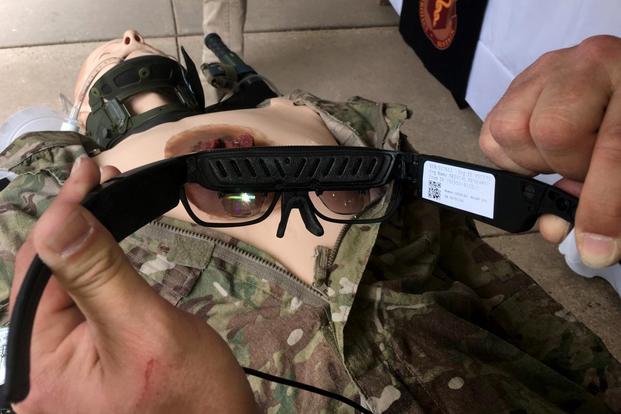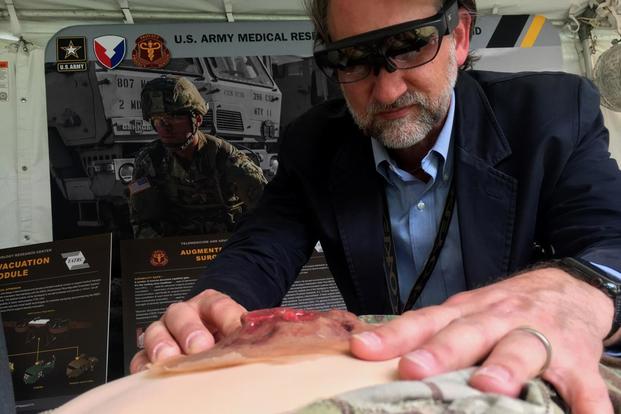U.S. Army medical researchers want to equip combat medics with a head-up display so they can connect with surgeons in the rear for help with critically wounded troops on the battlefield.
"What we are working on is the ability to project surgical expertise and medical expertise as far forward as we can ... right out to the medic," Geoffrey Miller, a research scientist at the Army's Medical Research and Materiel Command, told Military.com on April 25 at a Pentagon technology demonstration.
The effort is designed to use augmented reality to guide a medic to perform advanced procedures such as trauma surgery on wounded personnel who can't wait for a medevac, Miller said.
"Part of it is going to be training, but the other part is going to be the use of technology like augmented reality; being able to put a head-mounted display on a medic in the field and instantaneously connect them with the right expertise -- trauma surgeon etc. -- anywhere in the world," he said. "That surgeon would be able to see exactly what the medic sees. He will be able to hear what the medic hears. They will be able to talk back and forth real time."
Army leaders have already signaled that the service is committed to using augmented reality to make soldiers more effective in combat. The service recently invested $480 million in Microsoft's Integrated Visual Augmentation System, or IVAS, an augmented-reality tool designed to let soldiers view their weapon sight reticle and other key tactical information through goggles or an eyepiece.
Army medical researchers have been testing commercial, off-the-shelf goggles that use augmented reality for about 22 months, Miller said.
"We are trying to really figure out, what does right look like for this technology to go forward?" he said.
One of the challenges will be ensuring that the system will function on the battlefield, where communications don't always work.
"One thing we know about communication already is that it is reliably unreliable," Miller said. "We have had success running it over a tactical radio network. It runs a little bit differently. It doesn't run full-frame HD video, but you can still run it."
Another hurdle will be choosing the right headset, he said.
"If we wanted to go with a commercially available hardware set, we could probably move quicker," he said. "If we need something that is ruggedized for the operational space, it is going to take time. ... I think it's at least five years away."
-- Matthew Cox can be reached at matthew.cox@military.com.















